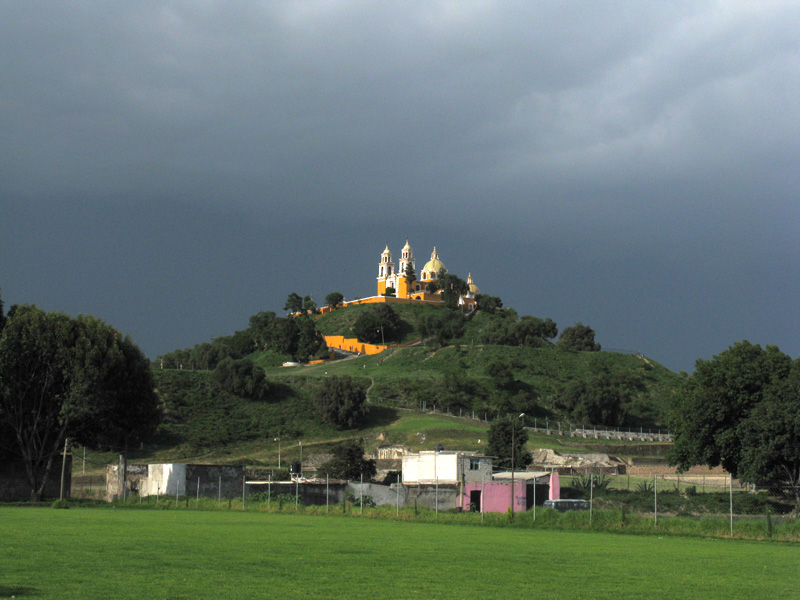Source: WTL photograph© 2009 taken in Cholula, México.
Image: The hill featured in this photograph more or less (mostly less) is what remains of the once immense, great, and imposing pyramid of Quetzalcóatl in the pre-conquest city of Cholula (Cholollan). The church on top of the pyramid-hill is the Santuario de la Virgen de los Remedios Cholula-Puebla.
Comments: This pyramid, which was the world's largest monument is known as the Great Pyramid of Cholula. In Náhuatl, is was called Tlachihualtépetl (= "artificial mountain"). It was constructed in four stages from 250 BCE to 900 CE. The church was built first in 1594, and, following a number of destructions by earthquakes during the past four centuries, it has been reconstructed and remodeled several times. Due to the dual aspect of the entire archeological site (i.e., Quetzalcóatl pyramid and Catholic Basilica), it is a pilgrimage site for both indigenous and Catholic pilgrimages. It should be noted that just as there are many Catholic churches dedicated to Our Lady of Remedies, so too were there many Mesoamerican pyramid-temples dedicated to Quetzalcóatl. The people of Cholollan were allies of the Mexica-Aztecs, and they were Náhuatl speaking, but they were a separate tribe-nation.
Humanities Topic: Describe the syncretic symbiosis of the (a) vegetation-covered pyramid and the sun-drenched church that now sits on top of a "hill." In your analysis, refer also to the images in Cholula (2) and Cholula (3).

